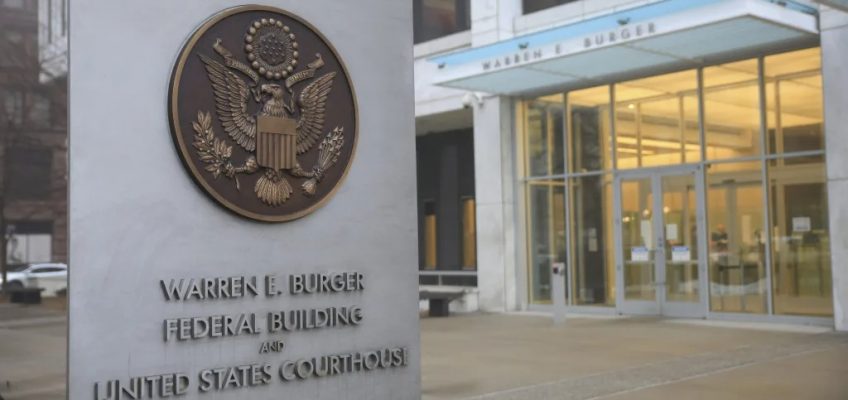By SAMY MAGDY
CAIRO (AP) — Amnesty International accused Israel of committing genocide in the Gaza Strip during its war with Hamas, saying it has sought to deliberately destroy Palestinians by mounting deadly attacks, demolishing vital infrastructure and preventing the delivery of food, medicine and other aid.
The human rights group released a report Thursday in the Middle East that said such actions could not be justified by Hamas’ Oct. 7, 2023, attack into Israel, which ignited the war, or the presence of combatants in civilian areas. Amnesty said the United States and other allies of Israel could be complicit in genocide, and called on them to halt arms shipments.
“Our damning findings must serve as a wake-up call to the international community: this is genocide. It must stop now,” Agnès Callamard, Secretary General of Amnesty International, said in the report.
Israel, which was founded in the aftermath of the Holocaust, has adamantly rejected genocide allegations against it as an antisemitic “blood libel.” It is challenging such allegations at the International Court of Justice, and it has rejected the International Criminal Court’s accusations that Prime Minister Benjamin Netanyahu and his former defense minister committed war crimes in Gaza.
“The deplorable and fanatical organization Amnesty International has once again produced a fabricated report that is entirely false and based on lies,” Israel’s Foreign Ministry said in a statement. Israel accused Hamas, which has vowed to annihilate Israel, of carrying out a genocidal massacre in the attack that triggered the war, and said it is defending itself in accordance with international law.
Hamas has been designated a terrorist organization by the United States, Canada, and European Union.
Amnesty says Palestinians face a ‘slow, calculated death’
Amnesty’s report adds an influential voice to a growing list of players that have accused Israel of committing genocide — which would put it in the company of some of the deadliest conflicts of the past 80 years, including Cambodia, Sudan and Rwanda.
The accusations have largely come from human rights groups and allies of the Palestinians. But last month, Pope Francis called for an investigation to determine if Israeli actions amounted to genocide, and Saudi Arabia’s crown prince, Mohammed bin Salman, who has signaled readiness to establish diplomatic relations with Israel, accused it of committing genocide.
Israel says it is at war with Hamas, not the people of Gaza. And key allies, including the U.S. and Germany, have also pushed back against the genocide allegations. But Amnesty accused Israel of violating the 1951 Genocide Convention through acts it says are intended to bring about the physical destruction of Gaza’s Palestinian population by exposing them to “a slow, calculated death.”
Amnesty said it analyzed the overall pattern of Israel’s conduct in Gaza between Oct. 7, 2023 and early July. It noted that there is no casualty threshold in proving the international crime of genocide, which is defined by the United Nations as acts intended to destroy, in whole or in part, a national, ethnic, racial or religious group.
To establish intent, Amnesty said it reviewed over 100 statements by Israeli government and military officials and others since the start of the war that “dehumanized Palestinians, called for or justified genocidal acts or other crimes against them.”
Israeli officials have previously said that such statements were taken out of context or referred to their stated goal of destroying Hamas, not Palestinian civilians.
Israel says it goes to great lengths to protect civilians and comply with international law — including ordering civilians to evacuate areas ahead of airstrikes and ground offensives. It also says it has facilitated the deliveries of large quantities of food and humanitarian supplies — a claim that is disputed by the U.N. and aid organizations working inside Gaza.
On Sunday, a former top Israeli general and defense minister accused the government of ethnic cleansing in northern Gaza, where the army has sealed off the towns of Beit Hanoun and Beit Lahiya and the Jabaliya refugee camp and allowed almost no humanitarian aid to enter.
Amnesty said it found that Israel “deliberately inflicted conditions of life on Palestinians in Gaza intended to lead, over time, to their destruction.” Those actions included the destruction of homes, farms, hospitals and water facilities; mass evacuation orders; and the restriction of humanitarian aid and other essential services.
It also analyzed 15 airstrikes from the start of the war until April that killed at least 334 civilians, including 141 children, and wounded hundreds of other people. It said it found no evidence that any of the strikes were directed at military objectives.
It said one of the strikes destroyed the Abdelal family home in the southern city of Rafah on April 20, killing three generations of Palestinians, including 16 children, while they were sleeping. An Associated Press investigation identified at least 60 families in which at least 25 members had been killed.
Amnesty has previously angered Israel by joining other major rights groups in accusing it of the international crime of apartheid, saying that for decades it has systematically denied Palestinians basic rights in the territories under its control. Israel has also denied those allegations.
Israel blames civilian deaths on Hamas, lack of aid on UN
Israel says it only targets terrorists and blames civilian deaths on Hamas because combatants fight in dense, residential areas and have built tunnels and other terrorist infrastructure near homes, schools and mosques.
It blames the lack of humanitarian aid on United Nations agencies, accusing them of not delivering hundreds of truckloads of aid that have been allowed in. The U.N. says it is often too dangerous to retrieve and deliver the aid. It blames Israel as the occupying power for the breakdown of law and order — which has enabled armed groups to steal aid convoys — while also accusing it of heavily restricting movement within the territory.
The war began when Hamas-led terrorists stormed into southern Israel on Oct. 7, 2023, killing some 1,200 people, mostly civilians, and taking around 250 hostage, including children and older adults. Some 100 captives are still held inside Gaza, at least a third of whom are believed to be dead.
Israel’s retaliatory military campaign has killed more than 44,500 people, according to Gaza health officials, whose count doesn’t distinguish between civilians and fighters, though they say more than half the dead are women and children.
The offensive is among the deadliest and most destructive since World War II, and has destroyed vast areas of the besieged coastal territory. It has displaced some 90% of the population of 2.3 million, often multiple times. Hundreds of thousands of people have crammed into squalid tent camps with little in the way of food, water or toilets.
Aid groups say the population is at risk of disease and malnutrition, especially as winter sets in. Experts have warned of famine in northern Gaza, which Israel has almost completely sealed off since launching a major military operation there in early October. Hamas fighters have repeatedly regrouped there and in other areas, and the group has faced no major internal challenge to its rule.
Amnesty says the US needs to press for an end to the war
The United States, which has provided crucial military aid to Israel and shielded it from international criticism, has repeatedly appealed to Israel to facilitate more aid, with limited results.
The Biden administration said in May that Israel’s use of U.S.-provided weapons in Gaza at times likely violated international humanitarian law but that the evidence was incomplete.
Callamard urged the United States, Germany and other countries supplying arms to Israel to pressure Netanyahu to end the war.




